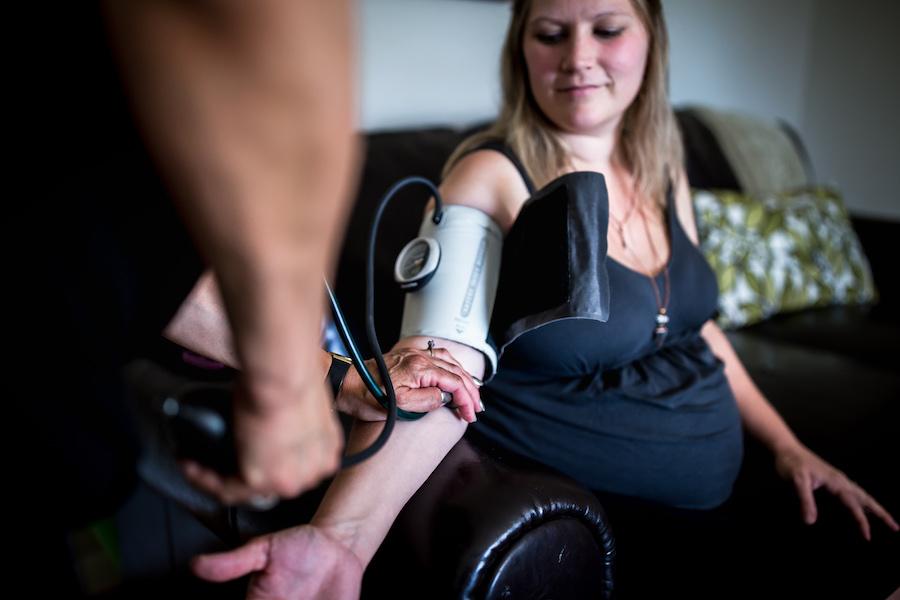During these weeks, you will be seen every two weeks at your clinic. Now that you have reached 28 weeks, you can begin tracking your baby’s movements. These are known as fetal kick counts. A healthy baby will move frequently in your uterus. You can help look out for the health of your baby by recording a count of the number of times your baby kicks, twists, flutters and rolls. You want to feel at least ten movements within two hours once a day. You will likely feel ten movements in less time than that.
A healthy baby moves every few hours and at least ten times in a two-hour window once a day. It is best to do this in a quiet environment after you have had something to eat, drink and rest. Babies go through sleep cycles and tend to be more active at certain times of the day. These fetal kick counts should be done daily until you deliver.
Remember that your baby will get bigger during the last month of the pregnancy and may not roll or kick as strongly as you are accustomed to. Usually this is because the baby is running out of room to move. The baby’s movement frequency does not change with advancing pregnancy, but the intensity of the movements does diminish. If your baby does not move as usual, contact your health care provider for further advice.
Further, at this point you will be offered a TDap vaccination that will protect your newborn against the life-threatening whooping cough. By getting this vaccine in your third trimester, you pass antibodies to your baby before birth. Unfortunately, babies cannot get vaccinated and start building protection against this deadly disease until they are two months old. Only you can give your baby protection against whooping cough until then. The Center for Disease Control and Prevention (CDC) recommends mothers-to-be get the vaccine between 27 and 36 weeks of each pregnancy.
RhoGAM or anti-D immune globulin, is another shot that you may have to get. During your first trimester, you were tested to find out your blood type. If your blood lacks the Rh antigen, it is called Rh-negative. If it has antigen, it is called Rh-positive. More than 85% of people in the world are Rh-positive. If your blood type is Rh negative, you will receive a RhoGAM shot at 28 weeks to prevent any harmful blood interactions between you and your baby. The exception for the RhoGAM shot would be for the woman who could provide documentation that the father of her baby also has Rh-negative blood.
Your health care provider will continue to measure your abdomen, blood pressure, urine and weight. You will also be assessed for any signs of preeclampsia. Preeclampsia is a potentially dangerous pregnancy complication characterized by high blood pressure, protein in your urine, severe headaches, excessive generalized swelling or weight gain. All of these measurements provide clues to the health of your pregnancy. It is important to discuss any concerns that you may have.
